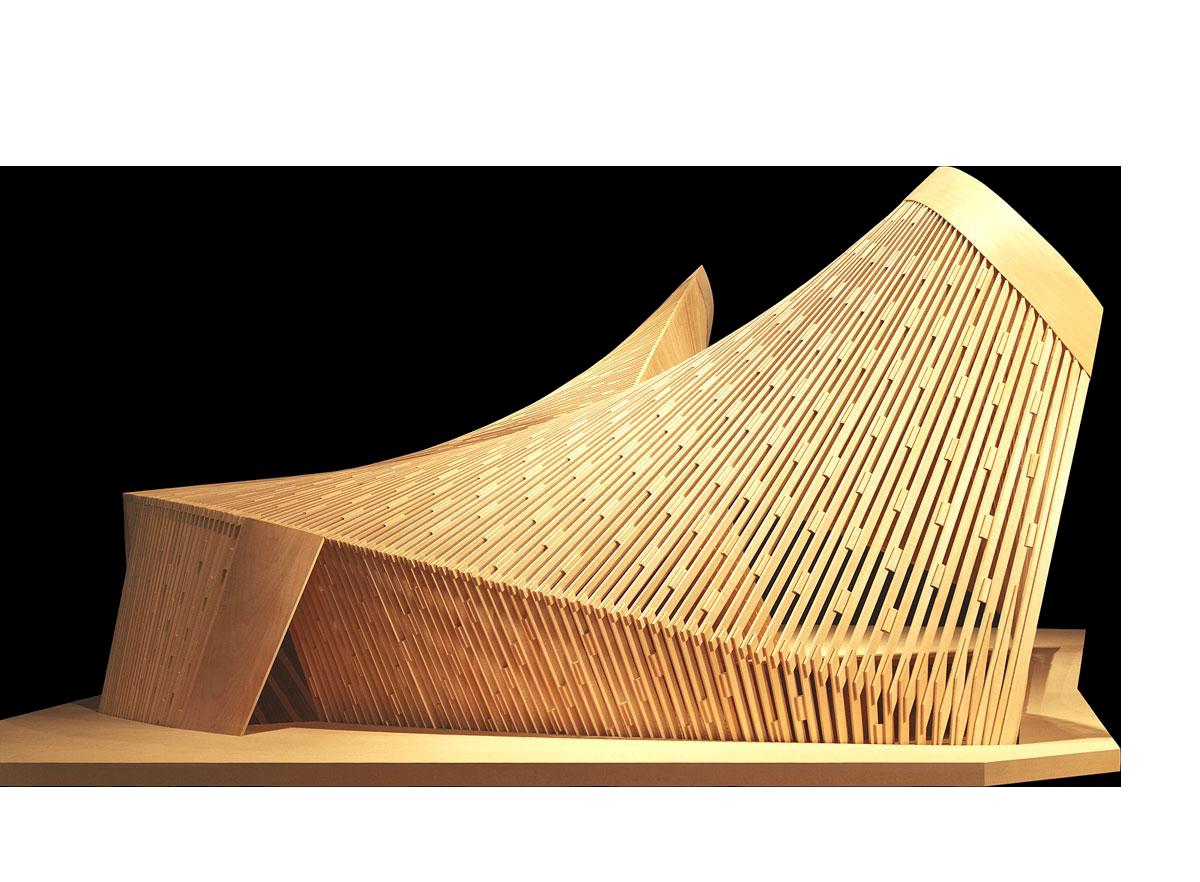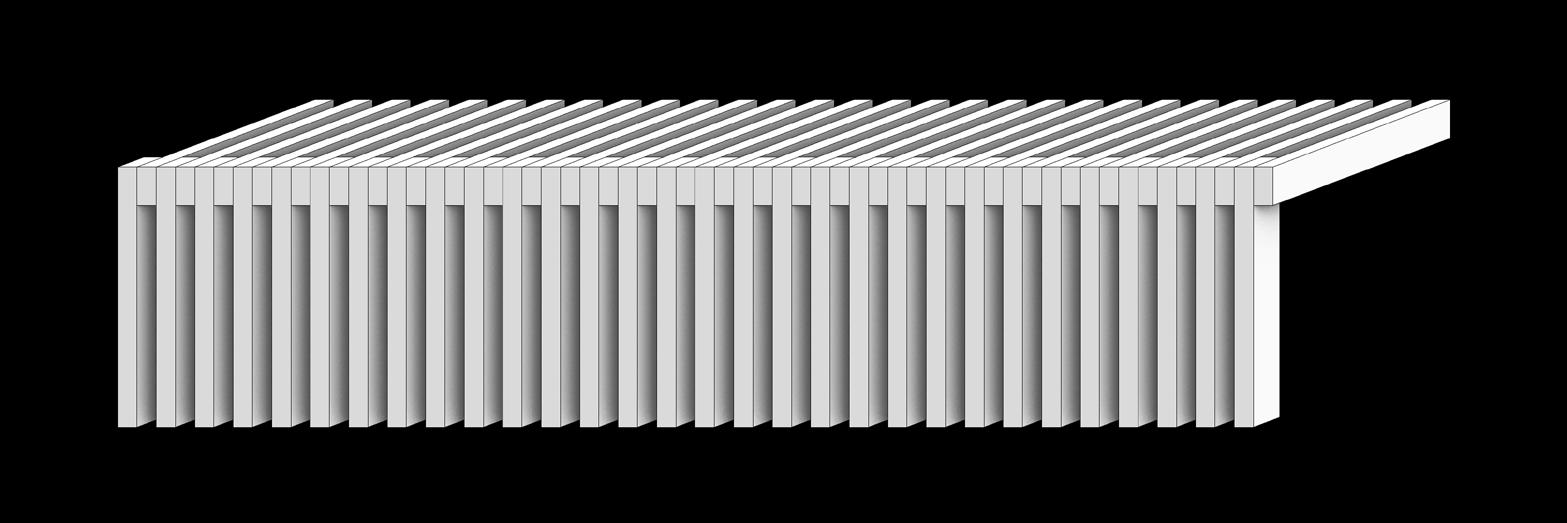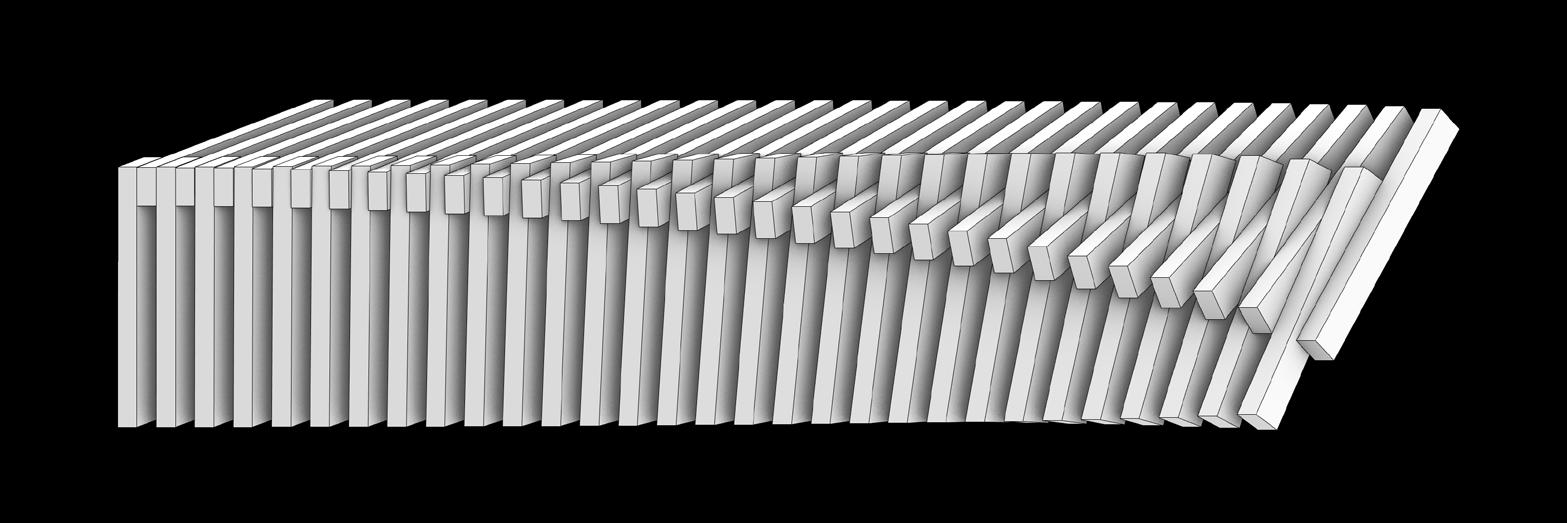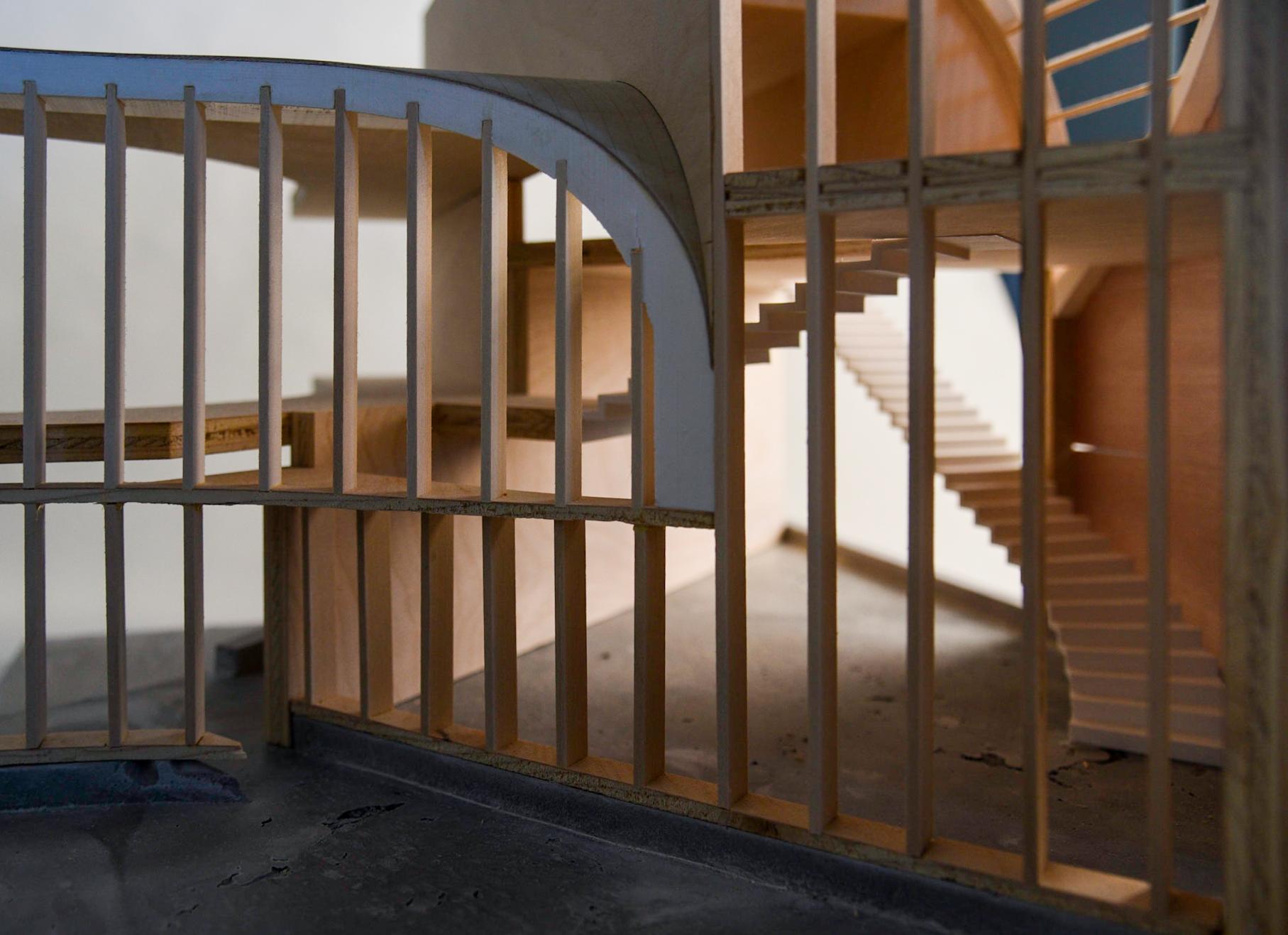amitrano a rchitecture

TABLE OF CONTENTS
REPRESENTATION III ANIMATION
PROFESSOR MATTHEW WAXMAN
STRUCTURES I HEINZ ISLER STUDIES
PROFESSOR JULIAN PALACIO
GROUP MEMBERS ND YANG
GROUP MEMBERS JOON WOO
GROUP MEMBERS DANIEL LUO
DESIGN III FORMAL ANALYSIS
PROFESSOR ELISA ITURBE
PROFESSOR JIMMY LOWDER
PROFESSOR GUIDO ZULIANI
PROFESSOR DEO DEIPARINE
DESIGN III INFILL HOUSING
PROFESSOR NIMA JAVIDI
SITE MODEL GROUP MEMBERS ILEA WUNDER
SITE MODEL GROUP MEMBERS GAIN MEEMONGKOL
SITE MODEL GROUP MEMBERS PHEOBE ZHANG
SITE MODEL GROUP MEMBERS STELLA ANDRIANIS
PG. 1-2
FALL 2022 I 2023
PG. 3-6
SPRING 2022 I 2023
PG. 7-8
SPRING 2022 I 2023
PG. 9-14
FALL 2022 I 2023




1 COURSE TOPIC VV 1 [VIDEO
ANIMATION]







VV
2 2 NICOLAS
NICOLAS AMITRANO
AMITRANO
STRUCTURES I HIENZ ISLER STUDIES


3
GRASSHOPPER SIMULATION
PHYSICAL STUDY MODEL
PARAMETRIC MODIFICATION
ASSESS MANIPULATIONS
PRESENTATION
STUDY-MODEL EXPERIMENTATION HEINZ ISLER SHELLS
Heinz Isler’s shells were an innovative method of constructing accurate furnicular curvature, done purely thorugh the process of physical model making. Today, with the innovations of CAD softwares and plugIns, those same shells may be simulated through discretized, calculated geometry. This project explores an expansion from Isler’s conventional process with the addition of simulated models constucted in Grasshopper that join the physical models within the iterative process through measurable parameterization.

NICOLAS AMITRANO 4
EXPORT PARAMETERS
STRUCTURES I HEINZ ISLER STUDIES
DIGITAL MODEL 01 STANDARD FOUR-POINT SHELL
DIGITAL MODEL 03 FIVE-POINT SHELL FAILURE : MESH FOLDINGIDISTORTION




DIGITAL MODEL 04 FIVE POINT SHELL WITH WEAVERBIRDMESH SUB-DIVISION


5
PHYSICAL MODEL 01 STANDARD FOUR-POINT SHELL
PHYSICAL MODEL 02 FIFTH POINT GRADUAL INTRODUCTION
PHYSICAL MODEL 03 FIVE-POINT SHELL FAILURE : INSUFFICIENT MATERIAL
PHYSICAL MODEL 04 FIVE POINT SHELL WITH MATERIAL COMPENSATION












VV 6 NICOLAS AMITRANO 6
DESIGN III FORMAL ANALYSIS PRECEDENT: ALTES MUSEUM KARL FRIEDRICH SCHINKEL


COURSE
VV 7
TOPIC
SECTIONAL
The expression of both Karl Friedrich Shinkel’s rich geometric choreography in plan and the structural language articulated through facade and tectonic organization is disclosed through this model’s stategic cut revealing both the operations developed in planar and sectional drawings while maintaining a physical construction of the project
BASE MODEL

in each of the Altes Museum’s mirrored halves. Through a combined use of laser cut acrylic, 3D-printined, and wooden elements, the model was first designed and planned in Rhinocerous 7, then carefully constructed with consideration of notational language denoting analogous, and related components of the building.

NICOLAS AMITRANO VV NICOLAS AMITRANO 8
PROJECT OUTLINE

With the atomization and subdivision of land property over the past century in combination with the exponential growth in population, space has emerged as an unprecedented commodity for families and single occupants. This studio focuses in the emerging typology of accessory dwellings infilled within existing suburban lots. Surveying and studying existing sites in Toronto, Canada, students selected two lots with nuanced conditions to design a project containing multiple single-family living units.

9 9 DESIGN II TORONTO INFILL HOUSING
UNIT STUDY MODEL UNIT EXPLODED AXONOMETRIC
CONSTRUCTED WITH GROUP MEMBERS: ILEA WUNDER GAIN MEEMONGKOL STELLA ANDRIANIS PHEOBE ZHANG

10 5 1 2 3 10 20 30 0 10 NICOLAS AMITRANO
SITE LOT MODEL
SITE NOLLI PLAN
TRESHOLD SECTIONAL MODEL
Each student in this studio was tasked with selecting a critical moment in their design containing conditions of transformative threshold. A model was to be produced with tectonic expression of the vernacular mode of construction; lightweight timber framing.


11 DESIGN II INFILL HOUSING


12

13 DESIGN II TORONTO INFILL-HOUSING


NICOLAS AMITRANO 14
















































